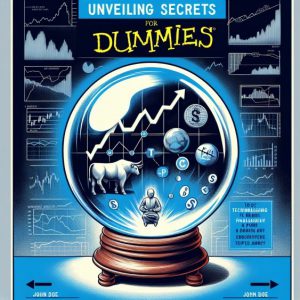
Mar 5, 2024
How to Be a Good Investor: Thriving in Turbulence and Triumph
In the complex ballet of financial markets, where global events and political unrest often lead the dance, one can find both peril and opportunity. For those wondering how to be a good investor, the answer lies in intelligent strategy and maintaining composure during storms and sunshine. The question then becomes: How does one navigate these turbulent and prosperous times with the understanding of a seasoned investor?
In the Shadow of Giants: The Contrarian Wisdom of Benjamin Graham
The first contrarian titan whose perspective we honour is Benjamin Graham, often known as the father of value investing. His philosophy underscores the importance of fundamental analysis and intrinsic value, particularly during periods of political volatility that can sway market sentiment and create price distortions. Graham’s approach teaches us that being a good investor means looking beyond the present turmoil and focusing on an investment’s worth.
Amid political events that rattle the markets, Graham would advise investors to remain vigilant but unshaken, recognizing that price and value are not always aligned. The wisdom here is to discern when the market’s mood is out of sync with reality and to act accordingly. This means having the foresight to hold firm when policy winds sway others or to invest when fear has unjustly tarnished an asset’s perceived value.
Navigating Through Noise: Channeling the Patience of Warren Buffett
Warren Buffett, a disciple of Graham, embodies the virtue of patience in investing. His legendary success is partly a testament to his ability to tune out the cacophony of the market and political noise and invest with a long-term horizon in mind. According to Buffett, being a good investor involves recognizing the cyclical nature of market psychology and not succumbing to its extremes.
In the face of market turbulence, whether from regional banking breakdowns or global tensions, Buffett’s strategy remains steadfast: invest in companies with solid fundamentals and an enduring moat. The lesson is clear—prosperity often follows those with the clarity of vision to see past immediate disturbances and the conviction to act when others hesitate.
The Art of Strategy: Machiavellian Moves in Modern Markets
As we navigate the investment landscape, we invoke the strategic prowess of Niccolò Machiavelli, who, although not an investor, was a master of strategy and human nature. His insights into power dynamics can be translated into investment terms: understanding the motivations and actions of market players is crucial for anticipating movements and positioning oneself advantageously.
Machiavelli would likely appreciate the contrarian approach—often it is the unconventional move, the one that goes against the current, that leads to triumph. How to be a good investor may sometimes mean adopting a Machiavellian lens, discerning when the market’s momentum is driven more by perception than reality, and daring to take the road less traveled by.
The Maverick of the Markets: Embracing the Boldness of George Soros
Our final contrarian guide is George Soros, renowned for his financial acumen and bold bets against prevailing market trends. Soros’s theory of reflexivity provides an invaluable perspective on how to be a good investor, particularly in understanding that market values often reflect collective investor bias rather than economic fundamentals.
During political instability, which can exacerbate market reflexivity, Soros might advise an active approach—identifying opportunities where the market’s reaction to events creates a gap between perception and reality. This could mean capitalizing on overreactions or identifying underpriced assets amid the chaos. Soros’s legacy reminds us that turbulence can be a breeding ground for opportunity for those with the insight and courage to seize it.
Contrarian Chronicles: Triumphs of Investment Mavericks
Contrarian investing is an approach that has often been at the heart of some of the most dramatic success stories in the financial world. This strategy involves going against prevailing market trends, buying assets out of favour, and often selling when they are the subject of frenzied buying. The logic behind this approach is that herd behaviour in the market can lead to overvalued or undervalued assets, and the contrarian investor aims to capitalize on these mispricings.
One of the most legendary contrarian triumphs belongs to Warren Buffett, the Oracle of Omaha. Buffett’s investment philosophy revolves around value investing, which aligns closely with contrarian principles. He emphasizes the importance of being “fearful when others are greedy, and greedy when others are fearful.” A prime example of this was during the 2008 financial crisis. While most of the market was selling in a panic, Buffett was buying. He invested $5 billion in Goldman Sachs, a bold move then. This investment paid off handsomely as the markets recovered, reaffirming how to be a good investor by staying rational when the market is not.
Another illustrative example of contrarian success is John Templeton, who famously bought 100 shares of every stock trading below $1 per share during the Great Depression. This bold move was made when most investors were fleeing the stock market. Templeton’s bet on these undervalued stocks eventually yielded massive returns, showcasing the potential rewards of contrarian investing during extreme market pessimism.
A more recent example, although not as well-known as Buffett or Templeton, is Michael Burry, one of the first investors to recognize and profit from the impending subprime mortgage crisis. Through the purchase of credit default swaps, Burry’s contrarian bet against the US housing market was met with scepticism and resistance. However, his deep analysis and conviction in his assessment paid off, turning his initial investment into a hugely profitable endeavour as the housing market collapsed. This real-life story was later popularized in the book and movie “The Big Short.”
A hypothetical scenario illustrating contrarian investing might involve a tech investor during a tech market downturn. While most of the market is selling off tech stocks due to a temporary setback, a contrarian investor might look at the strong fundamentals of select tech companies and decide to increase their stake, predicting a recovery based on long-term trends like digitalization and innovation growth. If the market corrects its overreaction, the contrarian benefits from significant gains once the sector returns.
In each case, the contrarian investors demonstrated a standard set of traits: a willingness to go against the grain, a thorough understanding of market fundamentals, and the patience to wait for their contrarian bets to pay off. These examples provide a roadmap for those looking to understand how to be a good investor, highlighting the importance of independent analysis, a conviction in one’s assessment, and the courage to act when others are paralyzed by fear. For those aiming to emulate the successes of investment mavericks, embracing a contrarian mindset may be a crucial step. However, it’s important to note that contrarian investing requires not just a contrarian instinct but also a disciplined approach to risk management and a deep understanding of the intrinsic value of investments.
Sir John Templeton’s Global Bargain Hunt during World War II
Panic and pessimism pervaded the stock market as World War II’s spectre loomed worldwide. In 1939, on the brink of global turmoil, Sir John Templeton executed one of the most contrarian investment moves in history. He purchased shares of every public European company trading for less than $1 per share. Many believed this to be financial folly, but Templeton’s conviction in the fundamental resilience of these companies paid off handsomely—his portfolio quadrupled in value over the next four years. This bold strategy exemplifies being a good investor by maintaining a global perspective and having the courage to act when fear dominates the market.
David Tepper’s Bet on Banks during the Financial Crisis
In 2009, in the aftermath of the global financial crisis, banks were the pariahs of the investment world. David Tepper, however, recognized an opportunity amidst the ruins. He invested heavily in distressed financial stocks, including Bank of America and Citigroup, betting the sector would recover once the panic subsided. This contrarian move, which went against the prevailing sentiment of the time, resulted in billions in profit for Tepper’s hedge fund, Appaloosa Management. His action is a masterclass in being a good investor by distinguishing between temporary setbacks and terminal declines.
Jim Chanos’ Persistent Prowess in Short Selling
Jim Chanos is a renowned shortseller and the founder of Kynikos Associates. Unlike many investors who focus on finding undervalued stocks to buy, Chanos has built a reputation for identifying overvalued companies or those with serious structural issues and then betting against them. One of his most famous and successful contrarian positions was against Enron before its collapse in 2001. Chanos conducted extensive research and, upon realizing the extent of Enron’s accounting irregularities, he took short positions that proved highly profitable when the energy giant filed for bankruptcy.
But Chanos’ wins are not a one-off event. Over the years, he has consistently demonstrated an uncanny ability to sniff out corporate misbehaviour and over-optimism, making profitable bets against companies like Tyco, WorldCom, and certain overvalued tech stocks. His success is a testament to being a good investor through meticulous research, scepticism of surface narratives, and the courage to act against prevailing market beliefs.
Adding Jim Chanos to the list of investment mavericks complements the stories of Sir John Templeton’s and David Tepper’s contrarian triumphs. It reinforces the importance of diligence, independent thinking, and the willingness to take a stand contrary to popular opinion—qualities essential for those seeking to successfully navigate the complex world of investing.
These narratives serve as compelling examples of contrarian investing and reinforce the themes discussed earlier: the foresight of Graham, the patience of Buffett, the reflexivity principle of Soros, and the strategic cunning reminiscent of Machiavelli. They are the tapestry into which the threads of contrarian wisdom are woven, providing a pattern for current and future investors to follow as they navigate the ever-shifting tides of the financial markets.
Conclusion: The Timeless Tenets of Good Investing
In conclusion, being a good investor is as much about strategy and knowledge as temperament and perspective. The teachings of Graham, Buffett, and Soros, viewed through a Machiavellian lens, provide a robust framework for navigating turbulent and prosperous times. They teach us to focus on intrinsic value, embrace patience, understand the psychological underpinnings of the market, and be bold when others are cautious.
Despite the enduring political uncertainties and market volatility, investors who practice these principles can achieve prosperity. They are like sailors who, rather than trying to calm the storm, learn to navigate through it. By doing so, they align themselves with the potential for wealth and the wisdom to achieve it.
Unlock New Ideas: Inspiring Articles

Financial Freedom Book: A Pinch of Salt, a Splash of Whiskey

Unveiling Secrets: Technical Analysis for Dummies

The Primary Purpose of Portfolio Diversification is to Finesse Your Investments for Optimal Returns

The Enduring Reign: Why is the US Dollar the World’s Most Pre-eminent Currency?

Fiat Money Example: The Dollar Shines as a Prime Illustration

Dogs of the Dow ETF: BiggerBite, Less Work

How Do You Win the Stock Market Game? Effective Strategies

Black Monday 1987: Turning Crashes into Opportunities

Technical Analysis of Trends: Cracking the code

A Sophisticated Approach: Do Bonds Increase Returns When the Stock Market Crashes?

Emotional Manipulation Tactics: The Dominant Force on Wall Street

Mastering Your Finances: Why You Need to Learn How to Manage Your Money with Grace

Stock Market Forecast Next 10 Years: Feasible or Not?

Why is the US Dollar Not Backed by Gold? Unveiling its Deadly Impact

Embracing Contrarian Meaning: The Magic of Alternative Perspectives


